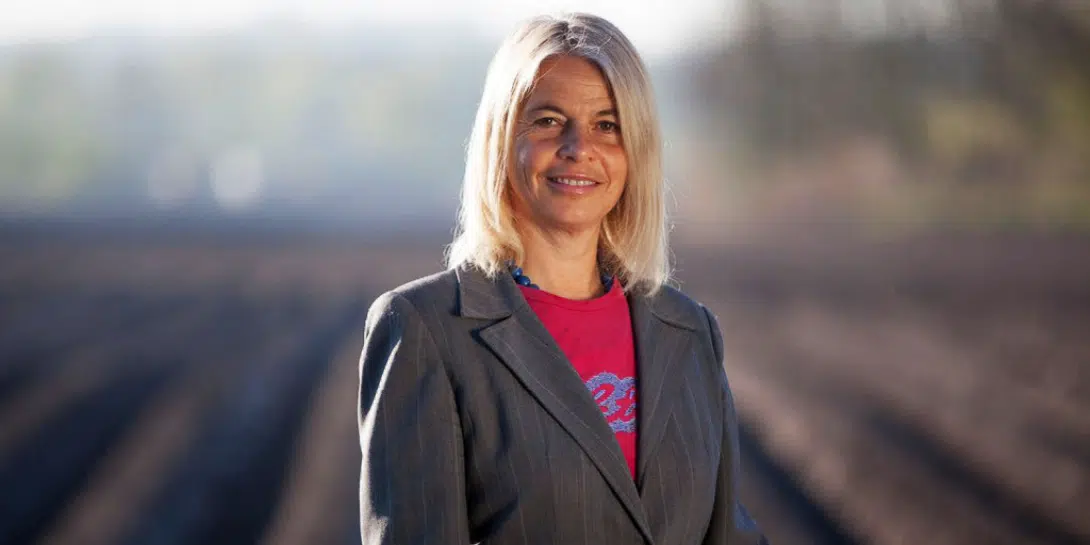In the age of disruption. Leaders need to focus on opportunity recognition. Risk management systems help leaders to recognize weak signals, turn them into opportunities and to stay competitive in an increasingly sustainable world
Journalist, Philip Nordentoft
When Karen Wendt was hired by Deutsche Bank in 1992, it was in the department of business development and strategy, where she started looking into the future. The quest was to imagine markets in ten years time with questions like: How can we sustain our AAA rating in ten years from now? Now, she is a well known expert on environmental and social governance, sustainable finance, risk management, and integration of sustainability into business models.
Karen also advises on eco-systems approaches. She learnt from experience, that it is critical for any company to be implementing sustainability to stay ahead of the market, become not just resilient but antifragile, stay innovative and financially competitive. One quality of the leaders of today is to imagine how their industry will look like in ten years from now. Therefore leaders will have to anticipate the innovation, the flows of capital , the disruptions and technological and societal revolutions. This touches the core of decision making. What is required to make good decisions?
The risk management perspective
“From a risk management perspective we can say nowadays – risk managementin the old style is not enough: We need an extended toolbox. In the current world of volatility, uncertainty, complexity and ambiguity we need more tools, than the current risk management toolbox provides. We are living through a number of tipping points, be it the financial crisis, called black swan and the virus crisis, sometimes referred to as red swan. Now, perhaps we are heading towards a green swan scenario as the Bank for International Settlement in Basel calls the climate crisis.”
Reaching a tipping point
“All these events could have been predicted using leverage point analysis. This provides us with indicators showing us how close we are away to a tipping point. Looking at the data, it is obvious, that we have been reaching tipping point after tipping point. With the UN Sustainable Development Goals, the EU Action Plan and green and social taxonomies emerging all around the world, it is clear, that any company has to choose its path of transformation now. We might see winners and losers in the future, either businesses go down the bin, or having embraced sustainability. Successful businesses will create a financial return and a social outcome, solving a societal problem with market mechanisms.”
This requires us to look into societal developments and into the meaning of sustainability. We are living in the times of VUCA (volatility, uncertainty, complexity and ambiguity). With regard to sustainability we have changed from a problem solving perspective to a solution creation perspective. The UN Sustainable Development Goals define a target knowledge, where business needs to go. Now we have to create the transformation knowledge, all this in a VUCA world. There are more and more decisions to be made under uncertainty, where the Monte Carlo simulation and the mathematical formula is not enough to give us the required guidance.
Poor data quality
The problem is the quality of the data and the quality of the probability estimator. Making good decisions under uncertainty and ambiguity is much more difficult than under risk. And it requires an extended tool box. Under risk the silent assumption is, that the future will be like the past. Therefore we can feed our models with reliable data. Crunching ex-post event data from millions of people, insurance companies estimates the likelihood of you being involved in a certain event. When we forecast, we also use risk modelling. However, the quality of the data depends on how many variables we have to estimate. And this is based on a very thin or unreliable database. This is particular true for situations that are unprecedented. Let us look into this extended toolbox, which is a good predictor of business opportunities. But also a weak signal for unprecedented scenarios and downsides.
The 10-year assessment for leaders
We are living in the age of disruption: Political disruption, financial disruption, technological disruption, institutional disruption, social disruption. To remain competitive in the future, businesses, small as well as large, must be aware of their 10-year vision. Leaders need to imagine how their market will look like ten years from now. The company therefore needs to know more than just Porters five forces and the competitive situation. It needs to go beyond that and include an in-depth analysis of various factors, political, environmental, social, technological and organisational (PESTO). Karen is going to talk you through some of these tools including the three lines of defense approach, the difference between impact and environmental and social governance and ecosystems approaches to shape the future. Stay innovative while becoming sustainable! Sustainability is the brother of innovation.
“A risk and impact analysis including a leverage point analysis can be made from a data-driven resource intense process. For small companies, it is an alternative to become part of an ecosystem taking an allocentric perspective on the future of the market”
Black swan, red swan and green swan
After the black and red swan we are now facing the green swan.
“We have to bring innovation when facing the green swan, and thus we need to become more allocentric in our business approach. The problems of today cannot be solved by one company alone, it needs an ecosystem.”
To prevent a green swan requires a shift in what truly shapes a business. Businesses will be even more competitor-oriented and have an increased focus on innovation. To be sustainable you need your business ecosystems to be willing and capable of solving societal issues using market mechanisms.
The three lines of defense
When it comes to risk management, Karen Wendt suggests to leaders the three lines of defense approach. The first line of defense is sales, the salesperson speaking to the client, the second line is quality management, risk management and operations. The third line of defense refers to compliance functions and internal audit. They provide comprehensive assurance based on the highest level of independence and objectivity within the organization. The first line of defense is the most important.
“When a challenge arises, like a drop in customer satisfaction, it is pivotal to do market research with each customer. The first line of defense shall then communicate upwards and to the other lines of defense. In a good risk management system the defense lines work together on creating better products and customer loyalty. The risk management system provides innovation indicators and is a system to stay agile and competitive on the market.”
If you are interested in joining one of EGNs networks, feel free to search for your perfect match here.
Let’s talk
Tell us a bit about yourself and we will make sure to connect you with an competent EGN consultant who will tell you more about the network and answer any questions you might have.




